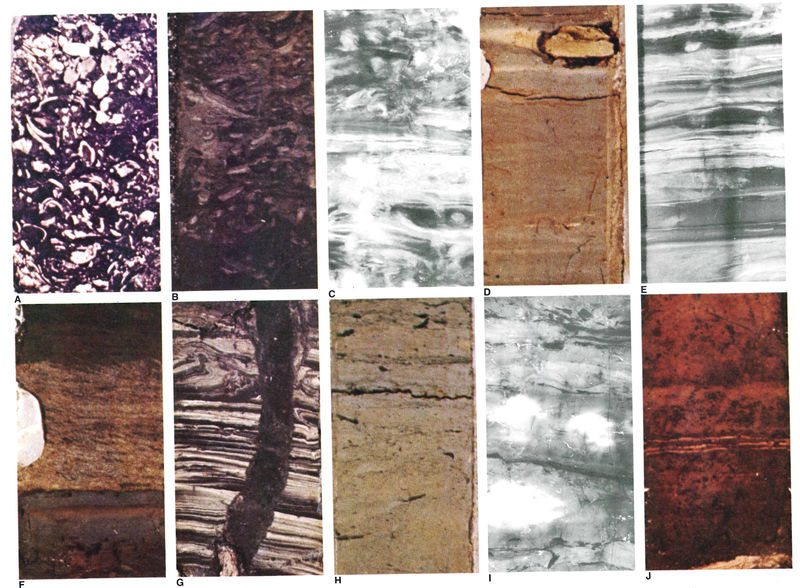File:M31F7.jpg

Original file (1,366 × 1,004 pixels, file size: 1.31 MB, MIME type: image/jpeg)
Core photographs of bedding in lacustrine delta fill. core diameter is 13 cm (5 in.). A. Shell debris in lower portion of lacustrine deposits. B. Highly burrowed organic clays of lacustrine deposits. C. X-ray radiograph of core from the lower portions of the lacustrine delta fill showing alternating parallel lamination of silt and clay with abundant burrowing. D. Laminated silty clays in lower portion of lacustrine delta fill. Note the elliptical Fe2CO3 nodule. E. X-ray radiograph of clays in lower portion of lacustrine delta fill in which high sedimentation rates preclude burrowing organisms. F. Well-stratified silty and sandy deposits of the coarser sediments forming the bulk of the lacustrine delta fill. G. Parallel and lenticular laminations common in the upper portion of the delta fill. Quite often clay-filled burrows are common in the capping sequence over lacustrine delta fill. Note extremely large root burrow. H. High organic backswamp clays that accumulate in a poorly drained reducing swamp environment. Organic stringers and peat deposits are common in this environment. I. X-ray radiograph of core taken in backswamp deposit. Note the stringers of organic debris (dark layer) and the early formation of siderite nodules (Fe2CO3). Pyrite is abundant in this setting. J. Silty clays with abundant iron oxide and calcium carbonate nodules that form in well-drained oxidizing swamp environment. From Deltaic environments of deposition, 1981, Coleman, J. M., and D. B. Prior, in AAPG Memoir 31.
File history
Click on a date/time to view the file as it appeared at that time.
| Date/Time | Thumbnail | Dimensions | User | Comment | |
|---|---|---|---|---|---|
| current | 19:50, 15 August 2014 |  | 1,366 × 1,004 (1.31 MB) | Molyneux (talk | contribs) | Core photographs of bedding in lacustrine delta fill. core diameter is 13 cm (5 in.). A. Shell debris in lower portion of lacustrine deposits. B. Highly burrowed organic clays of lacustrine deposits. C. X-ray radiograph of core from the lower portions ... |
You cannot overwrite this file.
File usage
The following page uses this file: